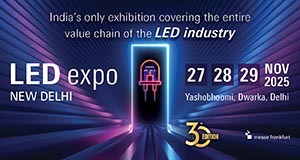Imagine a world where the tiniest building blocks of matter – individual molecules – become the wires, switches, and memory cells powering our technology. This isn’t science fiction; it’s the bold frontier of Molecular Electronics , a field dedicated to harnessing the inherent electronic properties of molecules to create revolutionary devices far smaller and potentially more efficient than today’s silicon-based electronics.
Shrinking Beyond Silicon’s Limits
For decades, Moore’s Law drove the relentless miniaturization of silicon transistors, packing ever more power onto tiny chips. But we’re approaching fundamental physical and economic barriers. Quantum effects become disruptive, heat dissipation becomes nightmarish, and fabrication costs skyrocket. Molecular electronics offers a paradigm shift: instead of carving circuits out of bulk silicon, it proposes using carefully designed, synthetic single molecules as the active electronic components themselves.
Molecules: Nature’s Ready-Made Nanotech
Why molecules? Nature excels at creating complex, functional structures at the nanoscale. Molecules are inherently tiny (1-5 nanometers!), offering the ultimate in miniaturization potential. Crucially, chemists possess an incredible toolbox to design and synthesize molecules with specific electronic properties. By manipulating their structure (adding donor/acceptor groups, conjugated bonds, redox centers), scientists can create molecules that act as:
▪Wires: Conducting electrons along their length.
▪Diodes: Allowing current flow in only one direction.
▪Transistors: Switching or amplifying electrical signals.
▪Memory Elements: Storing bits of information via changes in molecular state.
▪Sensors: Detecting specific chemicals through binding-induced electronic changes.
Beyond Silicon: The Allure of Molecular Scale
The potential advantages are transformative:
▪Ultimate Miniaturization: Devices operating at the single-molecule level promise circuits orders of magnitude denser than current silicon chips.
▪Novel Functionality: Molecules can exhibit unique quantum effects, optical properties (light emission/absorption), and chemical sensitivity impossible to replicate with bulk silicon.
▪Lower Power Consumption: Molecular switches can potentially operate with far less energy than silicon transistors, crucial for sustainable computing.
▪Bottom-Up Fabrication: The dream is to use chemical self-assembly techniques to “grow” complex circuits molecule-by-molecule, potentially offering cheaper, more scalable manufacturing than current top-down lithography.
Bridging the Macro and Nano Worlds: The Junction is Key
The fundamental challenge lies in the interface. How do you reliably connect individual molecules, just nanometers long, to the macroscopic metal wires we use to supply voltage and measure current? This is the domain of the “molecular junction.” Creating stable, reproducible contacts – often using techniques like scanning probe microscopy, break junctions, or nanopores – remains a significant hurdle. Even a single atom out of place can drastically alter a molecule’s conductivity.
Progress Amidst Challenges: From Concept to Component
Despite the difficulties, the field has made remarkable strides:
▪Proof-of-Principle: Scientists have repeatedly demonstrated basic molecular functions: single-molecule transistors, diodes, wires, and memory elements in laboratory settings.
▪Self-Assembled Monolayers (SAMs): Ordered layers of molecules attached to metal surfaces are used to study fundamental charge transport and are finding applications in sensors and modifying surface properties.
▪Molecular Switches: Molecules that change conductivity or optical properties upon exposure to light, voltage, or chemicals are being actively developed for memory and logic applications.
▪Hybrid Approaches: Integrating molecular components with conventional silicon electronics or carbon nanotubes/graphene is a promising near-term strategy to leverage molecular functionality.
The Rocky Road to Reality: Significant Roadblocks
Turning promise into practical technology faces formidable obstacles:
▪Fabrication & Reproducibility: Mass-producing identical, stable molecular junctions with atomic precision is incredibly difficult.
▪Stability & Reliability: Molecules can be fragile, sensitive to heat, light, oxygen, and mechanical stress. Ensuring long-term device operation is critical.
▪Integration: Connecting billions or trillions of molecular devices into complex, functional circuits is a massive engineering challenge.
▪Theoretical Understanding: Accurately modeling and predicting electron transport through complex molecules at room temperature is still an active area of research.
▪Heat Dissipation: While potentially lower power, concentrating energy in such tiny volumes creates intense local heating challenges.
The Future: A Molecular Revolution?
Molecular electronics represents a thrilling, long-term vision.While a full-fledged “molecular computer” replacing your smartphone’s chip is likely decades away, the journey is yielding profound scientific insights and tangible progress. Near-term applications are emerging in specialized sensors, ultra-high-density data storage, and novel nanoscale probes. The field forces us to rethink the very nature of electronic devices, pushing the boundaries of physics, chemistry, materials science, and engineering. The quest to command individual molecules as electronic components is not just about making things smaller; it’s about unlocking entirely new ways to compute, sense, and interact with the world at its most fundamental level. The excitement is palpable, though the path demands patience and ingenuity.
The molecular revolution may not happen overnight, but its potential to reshape technology from the bottom-up is undeniable.
References: 1)Deepseek.

About the author :
I am B. E. in Industrial Production and served as lecturer in three different polytechnics for 10 years. I am also a freelance writer and cartoonist.













